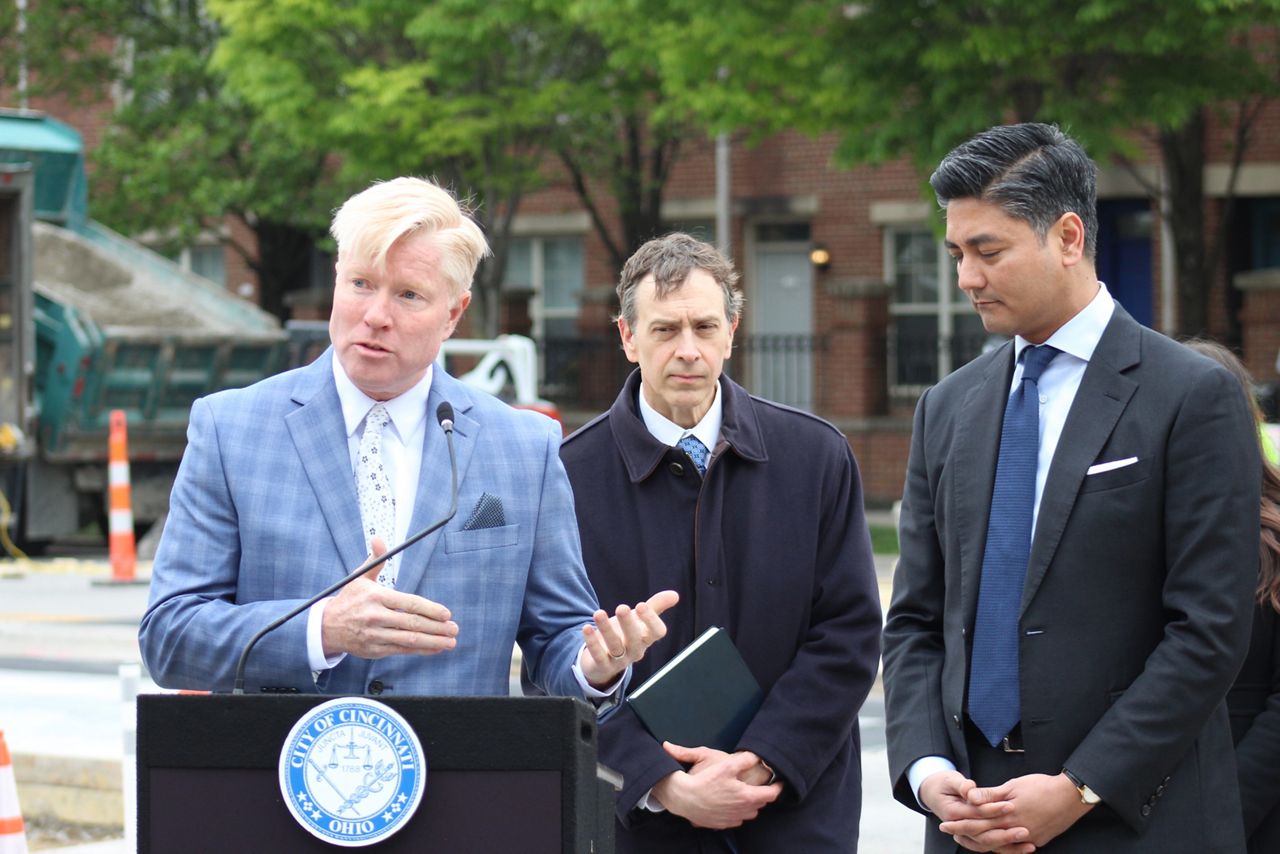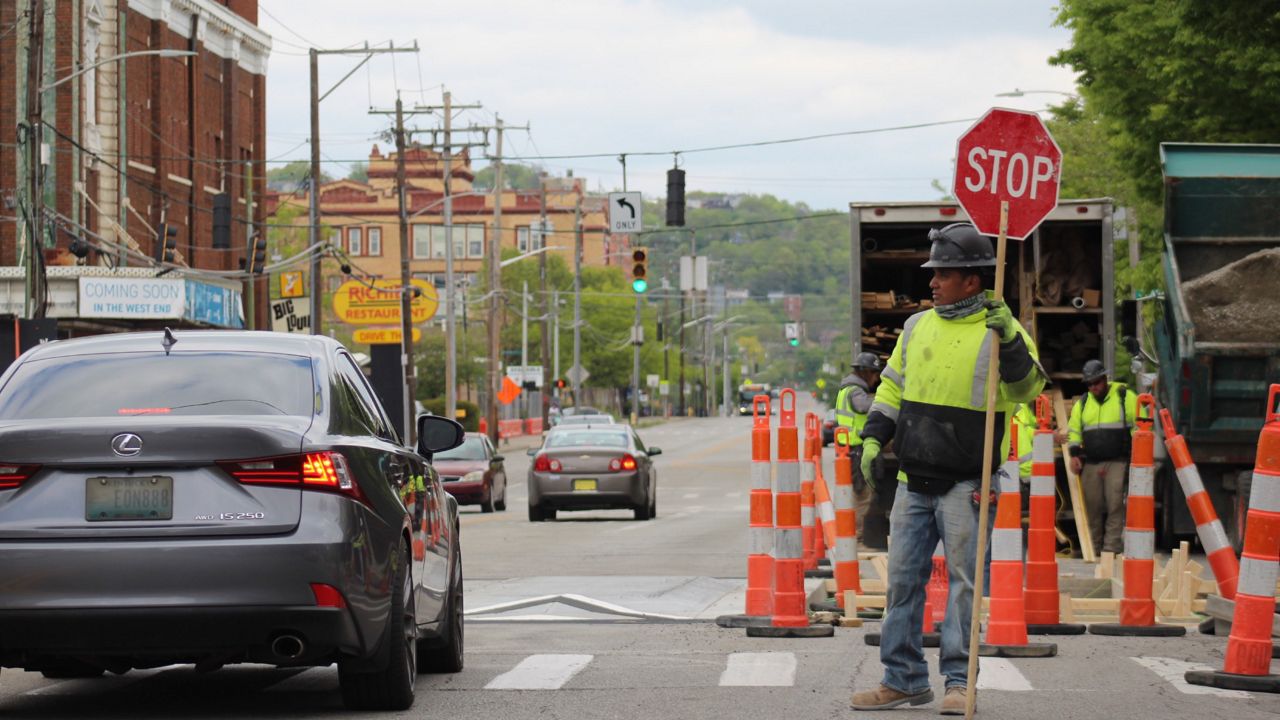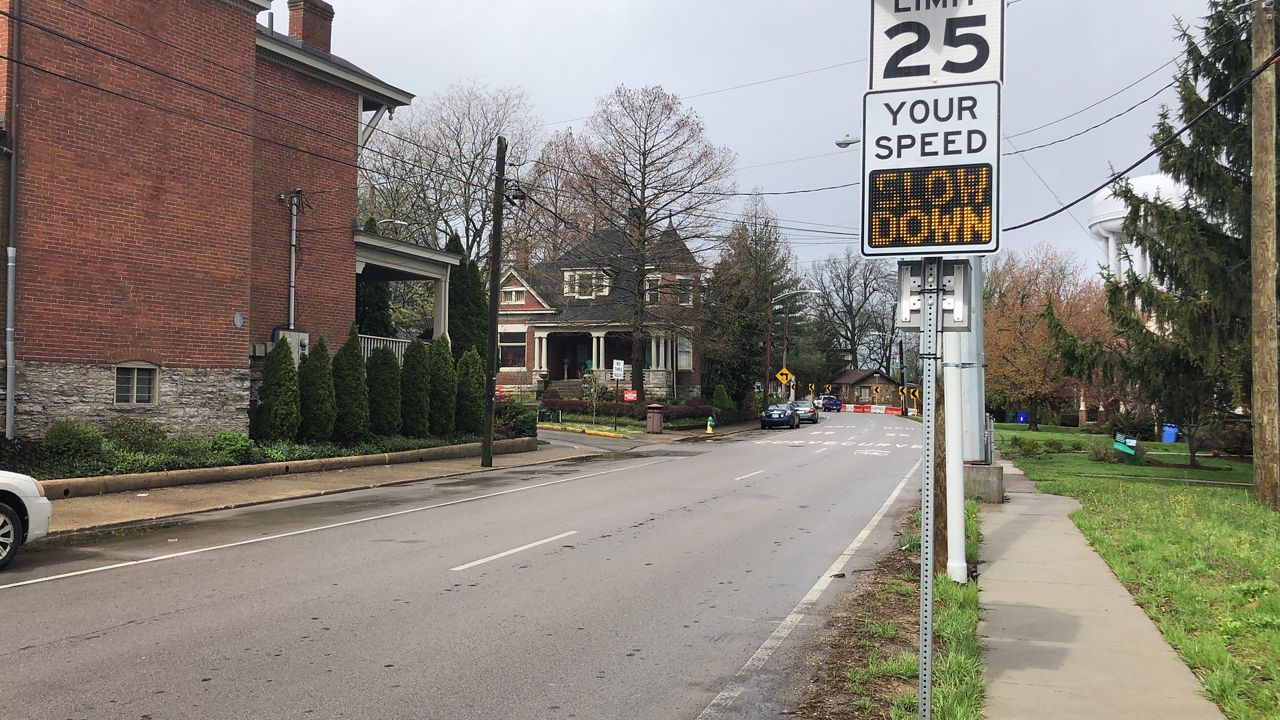CINCINNATI — The City of Cincinnati has a new plan that leaders believe gives it more control over setting speed limits on some of its streets.
What You Need To Know
- Cincinnati has a new approach for lowering speed limits on certain city roadways
- The city could drop the speed limit on some "through highways" from 35 mph to 25 mph with the inclusion of stop signs and yield signs
- DOTE will review streets as part of its annual street rehabilitation program
- City officials called the process change a new tool for helping to make Cincinnati streets safer
Speed limits are set by Ohio law based on how a roadway functions.
Limits for streets in school zones, for example, are 20 mph under the Ohio Revised Code. The ORC sets the limit at 35 mph for all state routes and “through highways.”
A through highway is a street longer than a mile that doesn’t have stop signs or yield signs.
About half of Cincinnati’s streets fall into the category of a through highway, according to data from the city’s Department of Transportation and Engineering (DOTE). They make up some of the city’s busiest streets. Examples are Montana Avenue, Madison Avenue, Erie Avenue, Ridge Avenue and Western Northern Boulevard.

Under this new evaluation process, DOTE engineers will work to determine if a street is still functioning as a through highway. If it’s not, the city will use the engineering tools to redesign the street in such a way that the street can be reclassified, Council member Mark Jeffreys said.
Once that takes place, the city can legally lower the speed limit to 25 mph in that area.
Jeffreys and Cincinnati’s administration announced the plan last week.
“This is a big for Cincinnati,” said Jeffreys, an outspoken advocate for pedestrian and roadway safety since joining City Council in January 2022.
“Traffic violence,” as Jeffreys labeled it, caused the death of 42,915 people in the United States in 2021, per data from the National Highway Traffic Safety Association (NHTSA).
Nine people were killed in traffic collisions on Cincinnati streets so far this year, Jeffreys said. That includes three people who died after being struck by a car while walking or jogging.
“I say this all the time: Raise your hand if you want speeds beyond 25 mph in front of your house,” Jeffreys added. “There’s no one in the city or in surrounding suburbs who would want that, so why do you want to subject somebody else to that?”
Residents have requested that City Hall change speed limits many times over the years, Jeffreys said. But most people, himself included, assumed the city couldn’t do anything about it.
Jeffreys stressed there’s nothing the city can do about state routes. But he said the city’s legal team uncovered an interpretation of state law that would allow them to reclassify through highways as streets by redesigning them.
In most cases, that would require having a stop sign or yield sign at least once every mile where they want to decrease the speed limit. However, there are federal guidelines for placing these types of signs, so the city can’t install them just anywhere.
A spokesperson for the Ohio Department of Transportation said that the agency wouldn’t play a role.
If able to make those updates, the city could change the speed limit on those streets by up to 10 mph.
The mortality rate for pedestrians struck by a car increases from 4.4% to 10.5% when speed goes from 25 mph to 35 mph, according to a report from Money Geek featuring NHTSA data from 2015 to 2020.
“That’s massive,” said Jeffreys, noting that the city’s administration worked on this for several months before his office felt comfortable announcing it.
It's not yet clear how many streets could be eligible for reclassification. DOTE plans to include the review of the through highways as part of its annual street repaving and rehabbing program. The city paves about 50 to 75 miles a year, plus additional miles for any of the federal grant money they may receive.
The city is also going to allow community councils to submit requests to address through highways in their neighborhood, Jeffreys said.
Emily Witt is a fan of the plan to lower speed limits. The 28-year-old lives in Covington, Ky., but her running group’s usual training route takes her through downtown and other parts of Cincinnati. Even though they’re typically running on the sidewalk, she’s had some “close scares” over the years while jogging through intersections or close to the curb.
“It’s scary and something that every runner has to be aware of,” she said. “(Drivers) know something is the law, but that doesn’t stop them from making very close calls, honking, cursing, yelling, etc. It’s very apparent we are in their way.”
Witt believes lowering the speed limit is a good first step, but it should be really “just the beginning” of the work to create a more inclusive roadway system, she said.
“Education, awareness and genuine care can go a long way,” she added.
Jeffreys didn’t disagree. He noted his own scares riding his bike throughout the city over the years. It happened a little more than a week ago while riding his bike on Forest Avenue in Avondale.

The driver of a speeding car — Jeffreys believes they were traveling upwards of 50 mph in a 30 mph zone — slammed on their breaks at a traffic light near to him. The driver then looked around and sped off while the light was still red, Jeffreys recalled.
“Things like this are happening every day all over our city,” he added.
Jeffreys doesn’t believe simply adding a couple fresh signs is enough to change a driver’s behavior. A four-lane roadway is still going to invite people to speed unless there’s a reason for them to slow down, he said.
As part of its street evaluation, DOTE will look at speed data and the physical construction of the streets to look for ways to create an acceptable “road diet.” That could mean eliminating a lane in both directions or narrowing the street by adding bump-outs.
Traffic engineers will consider solutions such as speed cushions. The city is installing 22 sets in areas all over the city this year as part of an ongoing pilot program.
A temporary set of rubber speed cushions installed for several months on Winneste Avenue saw the average speed in that part of Winton Hills drop from 37 mph to 20 mph.
A pedestrian hit by a car moving 40 mph has an 80% chance of suffering a severe injury or death, according to the U.S. Department of Transportation.
“It’s very important that the road design matches the speed limit to ensure people actually follow it,” Jeffreys said.
DOTE plans to fold this new process into the Complete Streets ordinance City Council approved earlier this year. The goal of that design approach is to make roadways less a way to push cars through an area as fast as possible and instead incorporate them into the day-to-day lives of residents who live there.
There’s no specific timeline or budget for this project, Jeffreys said. But he referred to it as a “priority.”
The city plans to approach this “very methodically,” Jeffreys said, to avoid what he described as a “Swiss cheese” roadway system. The last thing DOTE wants is to create unintentional speed traps where speed limits fluctuate seemingly at random from street to street, Jeffreys added.
“This has to be done thoughtfully; otherwise, there’s going to be safety issues, but this is a big step forward.”



